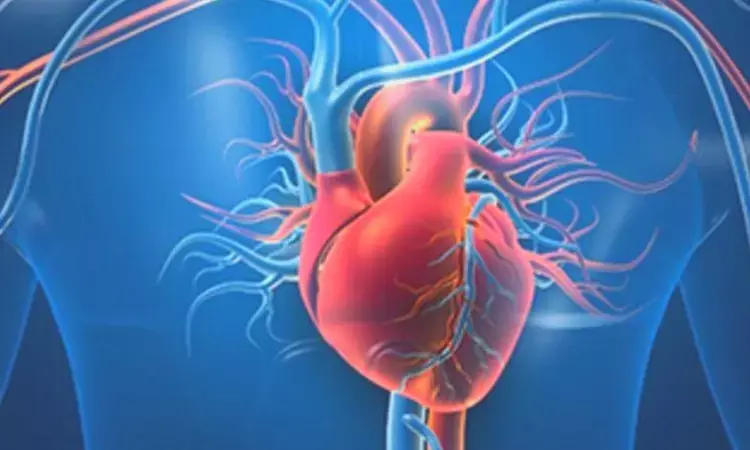- Home
- Medical news & Guidelines
- Anesthesiology
- Cardiology and CTVS
- Critical Care
- Dentistry
- Dermatology
- Diabetes and Endocrinology
- ENT
- Gastroenterology
- Medicine
- Nephrology
- Neurology
- Obstretics-Gynaecology
- Oncology
- Ophthalmology
- Orthopaedics
- Pediatrics-Neonatology
- Psychiatry
- Pulmonology
- Radiology
- Surgery
- Urology
- Laboratory Medicine
- Diet
- Nursing
- Paramedical
- Physiotherapy
- Health news
- Fact Check
- Bone Health Fact Check
- Brain Health Fact Check
- Cancer Related Fact Check
- Child Care Fact Check
- Dental and oral health fact check
- Diabetes and metabolic health fact check
- Diet and Nutrition Fact Check
- Eye and ENT Care Fact Check
- Fitness fact check
- Gut health fact check
- Heart health fact check
- Kidney health fact check
- Medical education fact check
- Men's health fact check
- Respiratory fact check
- Skin and hair care fact check
- Vaccine and Immunization fact check
- Women's health fact check
- AYUSH
- State News
- Andaman and Nicobar Islands
- Andhra Pradesh
- Arunachal Pradesh
- Assam
- Bihar
- Chandigarh
- Chattisgarh
- Dadra and Nagar Haveli
- Daman and Diu
- Delhi
- Goa
- Gujarat
- Haryana
- Himachal Pradesh
- Jammu & Kashmir
- Jharkhand
- Karnataka
- Kerala
- Ladakh
- Lakshadweep
- Madhya Pradesh
- Maharashtra
- Manipur
- Meghalaya
- Mizoram
- Nagaland
- Odisha
- Puducherry
- Punjab
- Rajasthan
- Sikkim
- Tamil Nadu
- Telangana
- Tripura
- Uttar Pradesh
- Uttrakhand
- West Bengal
- Medical Education
- Industry
High-sensitivity C-reaction protein crucial for predicting CV risk after PCI, study reveals

China: A recent study has shown elevated high-sensitivity C-reaction protein (hsCRP) to be an independent risk factor of major adverse cardiovascular events in patients undergoing percutaneous coronary intervention (PCI), with or without diabetes mellitus. The findings from the landmark prospective cohort study were published in BMC Cardiovascular Diabetology.
The study by Le Li and colleagues has illuminated a new dimension in predicting cardiovascular outcomes after PCI - a common procedure for treating coronary artery stenosis. The study, conducted on a massive scale with 8,050 participants, has underscored the significance of hsCRP, a biomarker associated with residual inflammatory risk.
The findings gathered over a median follow-up of 35.7 months, have far-reaching implications for both diabetic and non-diabetic patients, heralding a novel era of personalized risk assessment in cardiovascular care.
In a bid to evaluate the prognostic value of hsCRP, the study segregated patients into four categories based on their hsCRP levels and diabetic status: hsCRP-L/non-DM, hsCRP-H/non-DM, hsCRP-L/DM, and hsCRP-H/DM. The primary endpoint, termed major adverse cardiovascular events (MACEs), encompassed a spectrum of outcomes including all-cause mortality, myocardial infarction, stroke, and unplanned vessel revascularization. Over a three-year follow-up period, the study scrutinised these outcomes against hsCRP levels.
The results brought to light a pivotal relationship between hsCRP and cardiovascular risk:
● After a median follow-up period of 35.7 months (interquartile range: 33.2 to 36.0 months), the study observed that 674 patients experienced major adverse cardiovascular events (MACEs).
● The investigation revealed a significant correlation between elevated hsCRP levels and an escalated risk of MACEs in both individuals with diabetes (hazard ratio [HR] = 1.68, 95% confidence interval CI 1.29–2.19, P < 0.001) and those without diabetes (HR = 1.31, 95% CI: 1.05–1.62, P = 0.007), even after accounting for other potential factors affecting outcomes.
● Kaplan-Meier survival analysis pinpointed the highest MACE incidence within the hsCRP-H/DM group (P < 0.001).
● Additionally, outcomes from the restricted cubic spline analysis unveiled a positive linear connection between hsCRP levels and the occurrence of MACEs.
These groundbreaking findings spotlight the role of hsCRP as an independent predictor of cardiovascular risk in patients undergoing PCI. The study's outcomes challenge the traditional demarcation between diabetic and non-diabetic patients, demonstrating that elevated hsCRP levels transcend glycemic metabolism status. This transformative insight offers a powerful tool for clinicians to refine risk assessments and tailor interventions, ushering in an era of precision cardiovascular care.
Reference:
Li, L., Liu, S., Zhang, Z., Zhou, L., Zhang, Z., Xiong, Y., Hu, Z., & Yao, Y. (2023). Prognostic value of high-sensitivity C-reactive protein in patients undergoing percutaneous coronary intervention with different glycemic metabolism status. Cardiovascular Diabetology, 22(1). https://doi.org/10.1186/s12933-023-01932-2
Dr Kamal Kant Kohli-MBBS, DTCD- a chest specialist with more than 30 years of practice and a flair for writing clinical articles, Dr Kamal Kant Kohli joined Medical Dialogues as a Chief Editor of Medical News. Besides writing articles, as an editor, he proofreads and verifies all the medical content published on Medical Dialogues including those coming from journals, studies,medical conferences,guidelines etc. Email: drkohli@medicaldialogues.in. Contact no. 011-43720751


